Did you know? |
In 1998 the T&M company Rigol was founded in Beijing/China. In 1999 Rigol launched its first product, a digital storage oscilloscope. Read more...
Latest Oscilloscope News |
Diagnostic Oscilloscopes for Vehicles
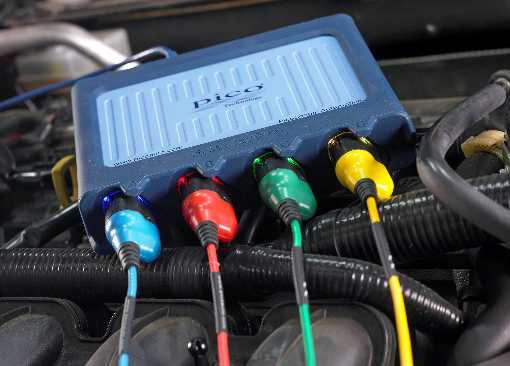 14 April 2020 - Pico Technology launched the new PicoScope 4425A and 4225A diagnostic oscilloscopes, available in 4-channel and 2-channel configurations. This latest diagnostic PicoScope combines all the strengths of the existing 4425/4225 labscopes but adds a smart interface for powered and intelligent accessories (PicoBNC+), which combines the standard BNC with an active digital connection and power. The 4425A and 4225A continue to work with all existing BNC probes and accessories, preserving investments.
14 April 2020 - Pico Technology launched the new PicoScope 4425A and 4225A diagnostic oscilloscopes, available in 4-channel and 2-channel configurations. This latest diagnostic PicoScope combines all the strengths of the existing 4425/4225 labscopes but adds a smart interface for powered and intelligent accessories (PicoBNC+), which combines the standard BNC with an active digital connection and power. The 4425A and 4225A continue to work with all existing BNC probes and accessories, preserving investments.
Oscilloscopes for mmWave Wideband Analysis up to 110 GHz
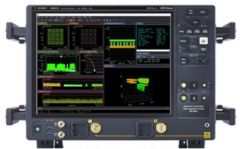 02 April 2020 - Keysight Technologies announced a new cost effective and flexible single channel instrument specifically designed to accelerate development of next generation mmWave communications, satellite communications, and radar applications. It enables a flexible wideband analysis up to 110 GHz.
02 April 2020 - Keysight Technologies announced a new cost effective and flexible single channel instrument specifically designed to accelerate development of next generation mmWave communications, satellite communications, and radar applications. It enables a flexible wideband analysis up to 110 GHz.
Automotive Test Scopes with WiFi and LAN Connection
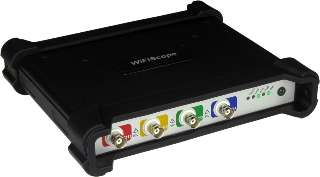 30 March 2020 - TiePie engineering introduced three new powerful high resolution Automotive Test Scopes with WiFi and LAN connection, the Automotive Test Scope ATS610004DW-XMSG (1GSa/s), Automotive Test Scope ATS605004DW-XMS (500 MSa/s) and Automotive Test Scope ATS5004DW (50 MSa/s). These new WiFiScopes are the first and industry’s only WiFi connected Automotive Test Scopes with differential inputs.
30 March 2020 - TiePie engineering introduced three new powerful high resolution Automotive Test Scopes with WiFi and LAN connection, the Automotive Test Scope ATS610004DW-XMSG (1GSa/s), Automotive Test Scope ATS605004DW-XMS (500 MSa/s) and Automotive Test Scope ATS5004DW (50 MSa/s). These new WiFiScopes are the first and industry’s only WiFi connected Automotive Test Scopes with differential inputs.
150MHz Battery-Powered Portable Oscilloscopes
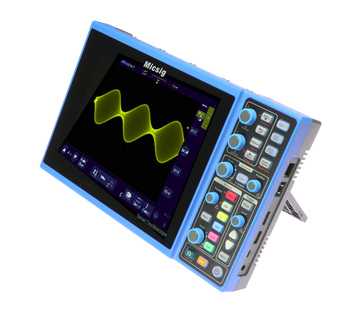 19 March 2020 - The Micsig STO1000E PLUS series includes two- and four-channel battery-powered portable oscilloscopes with bandwidths of up to 150MHz. The three models in the series are: STO1102E PLUS 2-channel 100MHz, STO1152E PLUS 150MHz 2-channel, and STO1104E PLUS 4-channel 100MHz. Each oscilloscope includes 70Mpts memory, 1GSa/s sampling (single channel), 130,000wfm/s refresh rate, and a 7.5Ah Li battery for extended field use.
19 March 2020 - The Micsig STO1000E PLUS series includes two- and four-channel battery-powered portable oscilloscopes with bandwidths of up to 150MHz. The three models in the series are: STO1102E PLUS 2-channel 100MHz, STO1152E PLUS 150MHz 2-channel, and STO1104E PLUS 4-channel 100MHz. Each oscilloscope includes 70Mpts memory, 1GSa/s sampling (single channel), 130,000wfm/s refresh rate, and a 7.5Ah Li battery for extended field use.
Professional Functionality in Entry-Level Oscilloscope
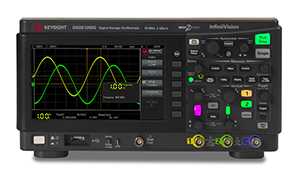 18 March 2020 - Keysight Technologies announced four new 2-channel models of the InfiniiVision 1000 X-Series oscilloscopes with 50 MHz to 200 MHz bandwidth, providing professional-level measurements and capabilities at an affordable price, including a standard decode function for five serial data protocols and remote connection via local area networks (LANs) and USB.
18 March 2020 - Keysight Technologies announced four new 2-channel models of the InfiniiVision 1000 X-Series oscilloscopes with 50 MHz to 200 MHz bandwidth, providing professional-level measurements and capabilities at an affordable price, including a standard decode function for five serial data protocols and remote connection via local area networks (LANs) and USB.
Fully-Integrated Optical Communications Test Platforms
18 March 2020 - Tektronix and Coherent Solutions announced an exclusive partnership agreement to provide fully-integrated optical communications platforms in support of the growing global demand for communications across the telecom, datacom, defense/aerospace, and semiconductor markets.
Differential WiFi Oscilloscopes with up to 16 Bit Resolution
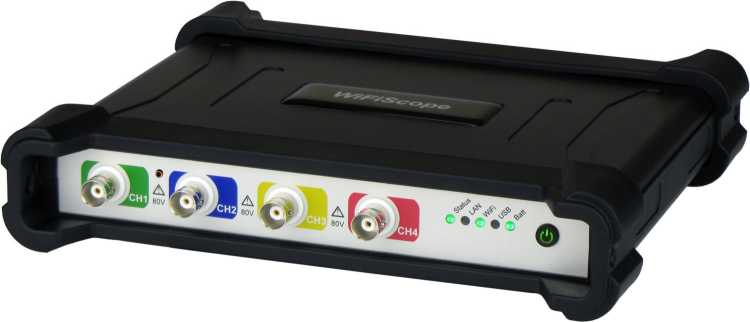 16 March 2020 - TiePie engineering introduced two new members of the high resolution WiFiScope series oscilloscopes. The new WiFiScopes mark a new, innovative development of TiePie engineering: the first and industry’s only WiFi connected oscilloscopes with differential inputs. Available are two models with 4 channels: WiFiScope WS4 DIFF (50 MHz bandwidth) and WiFiScope WS6 DIFF (250 MHz bandwidth).
16 March 2020 - TiePie engineering introduced two new members of the high resolution WiFiScope series oscilloscopes. The new WiFiScopes mark a new, innovative development of TiePie engineering: the first and industry’s only WiFi connected oscilloscopes with differential inputs. Available are two models with 4 channels: WiFiScope WS4 DIFF (50 MHz bandwidth) and WiFiScope WS6 DIFF (250 MHz bandwidth).
Oscilloscope Basics |
Digitizer and Oscilloscope - Equal Alternatives?
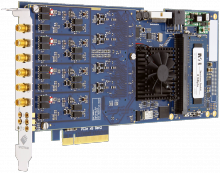 Can a digitizer be used as an oscilloscope? What is the difference between an oscilloscope and a digitizer? Should I better use a digitizer or an oscilloscope in my next application? These are interesting questions and the best way to start to answer these is the look up the dictionary definition of an oscilloscope: "An electronic instrument used to measure changing electric voltages. It displays the waveforms of electric oscillations on a screen."
Can a digitizer be used as an oscilloscope? What is the difference between an oscilloscope and a digitizer? Should I better use a digitizer or an oscilloscope in my next application? These are interesting questions and the best way to start to answer these is the look up the dictionary definition of an oscilloscope: "An electronic instrument used to measure changing electric voltages. It displays the waveforms of electric oscillations on a screen."
Oscilloscope Background |
A simple method to verify the bandwidth of your probe
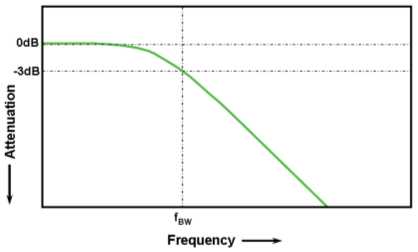 In oscilloscopes or oscilloscope probes, bandwidth is a measure of the width of a range of frequencies measured in Hertz. Specifically, bandwidth is specified as the frequency at which a sinusoidal input signal is attenuated to 70.7 percent of its original amplitude, also known as the -3 dB point. Most oscilloscope companies design the scope/probe response to be as flat as possible throughout its specified frequency range, and most customers simply rely on the specified bandwidth of the oscilloscope or oscilloscope probes, wondering if they are indeed getting the bandwidth performance at the probe tip. Now you can use these step-by-step instructions to simply measure and verify the bandwidth of your probe with an oscilloscope you may already have.
In oscilloscopes or oscilloscope probes, bandwidth is a measure of the width of a range of frequencies measured in Hertz. Specifically, bandwidth is specified as the frequency at which a sinusoidal input signal is attenuated to 70.7 percent of its original amplitude, also known as the -3 dB point. Most oscilloscope companies design the scope/probe response to be as flat as possible throughout its specified frequency range, and most customers simply rely on the specified bandwidth of the oscilloscope or oscilloscope probes, wondering if they are indeed getting the bandwidth performance at the probe tip. Now you can use these step-by-step instructions to simply measure and verify the bandwidth of your probe with an oscilloscope you may already have.

 How to resolve AdBlock issue?
How to resolve AdBlock issue?